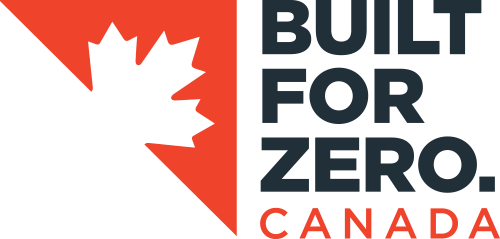The development of a Quality By-Name List has paved the way for the city of Whitehorse to forge ahead with their goal of reaching Functional Zero Chronic Homelessness. This blog is a part of our Bright Spot series highlighting outstanding work in ending homelessness happening across Canada.
 The city of Whitehorse’s unwavering efforts in community advocacy and engagement has led them to achieve a Quality By-Name List despite the many challenges.
The city of Whitehorse’s unwavering efforts in community advocacy and engagement has led them to achieve a Quality By-Name List despite the many challenges.
“There are a lot of different places for someone experiencing homelessness to navigate through and many opportunities for a vulnerable person to get lost along the way,” says Neena MacKinnon, Coordinated Access Coordinator at the Safe at Home Society.
In 2017, the number of unhoused individuals in Whitehorse led to the publication of the Safe at Home plan, an urgent response guided by five strategic priorities: increasing the supply of safe, stable, and affordable housing options, increasing access to housing and services within a system of care, strengthening community support and engagement, preventing homelessness, and improving data collection to evaluate success of systems.
“These priorities were largely reinforced with the introduction of a By-Name List. As a compact community in the Northern region, it is pivotal that we know our neighbours “By Name” and offer support using a person-centered, community-wide approach,”
The Driving Force of Data
Whitehorse began development of a By-Name List in 2017, and since that time, has focused efforts on making data-informed system improvements in community collaboration, service coordination and access to services for people experiencing homelessness.
“Having the By-Name List has not only allowed us to engage private landlords and house a fair number of individuals, but it has also created opportunity for more collaboration amongst our partners,” Neena explains.
Prior to the By-Name List, the community’s main source of information for understanding and responding to homelessness was the biannual Point in Time Count and the bed count numbers at the Whitehorse Emergency Shelter.
“The By-Name List provides a more robust picture of the various populations experiencing homelessness and has been a driving force in advocating for change. We’ve been able to establish that while more affordable housing stock would help, there is also a growing need for supportive housing. This data allowed us to demonstrate that need, as well the need for affordable units,” says Neena.
Steps to Success
Reaching this Built for Zero milestone required a great deal of buy-in from both government and non-government organizations in Whitehorse. Despite the community’s moderate population size, there were a sizable number of organizations who, until recently, were very siloed from each other.
“The first step was really ensuring that our community partners understood and supported the Coordinated Access Process. Then, we publicly announced a proposal to turn a hotel into 55 supported housing units. This project created opportunities for people to recognize Safe at Home Society as the hub for a community-wide Coordinated Access System and the advantages of using a By-Name List to disrupt the status quo around homelessness strategies,” Neena explains.
“Recently, collaboration validated our work developing a Coordinated Access process, as well as, developing a quality By-Name List. Through By-Name List data we identified an unusually high number of homeless families that needed housing. Through collaboration with Yukon Housing Corporation, 16 units were allocated to families identified on the By-Name List as high priority. Not only did this decrease the number of families in Whitehorse experiencing homelessness, but also acted as validation for the Coordinated Access process.”
Non-government organizations within the community had previously shared reservations about the effectiveness of using a By-Name List and Coordinated Access process in ending homelessness. However, when Safe at Home Society, in partnership with Yukon Housing Corporation, was able to quickly house people using quality By-Name List data, that mindset shifted completely.
“More partners are coming to our Coordinated Access Housing Team interested in being an intake point for their clients because they’ve seen proof that data drives decision making,” Neena states. “Having identified that there were – as of November 2021 – 38 families including numerous children experiencing homelessness in Whitehorse, we identified a gap in services which resulted in a rapid solution.”
While the COVID-19 pandemic created a new set of challenges for the northern region, it also provided an opportunity for more community collaboration.
“The increased funding that Reaching Home provided allowed for alternative community partners to get involved with Coordinated Access. Groups that hadn’t been connected before the pandemic, joined the Coordinated Housing Access Team resulting in increased and accessible alternative access points for people to complete an intake onto coordinated homelessness services and be assessed by priority on the By-Name List.”
Indigenous Partners Shaping Future Progress
With Whitehorse having a disproportionally large percentage of Indigenous Peoples on the By-Name List, the community is focusing on developing better partnerships with Indigenous groups.
“There are two First Nation’s governments based in the capitol city and one currently sits on our Coordinated Housing Access Team,” Neena explains. “Our Community Advisory Board has also received recommendations from IRP, a local consulting firm specializing in reconciliation, which has been supporting both our funding decisions and daily work. Our aim is to have Indigenous Peoples and groups become active participants and shape future direction in all aspects and levels of local work in ending homelessness.”
Moving Forward
Now that Whitehorse has established a Quality By-Name List, Neena explains, “Our main goal is to start reducing the number of people experiencing homelessness. We will continue to reach out to community partners and grow our network of supports.”
As a community, they plan to use data to continue to support and improve By-Name List and Coordinated Access processes, as well as, to identify and replicate best practices for helping clients stay housed.
“Safe at Home Society would like to see our Coordinated Access System adapted and expanded across the Territory. No matter what future projects we support, our driving goal will always be our desire to reach functional zero and end homelessness one person at a time.”
This blog is a part of our Bright Spot series highlighting outstanding work in ending homelessness happening across Canada.
